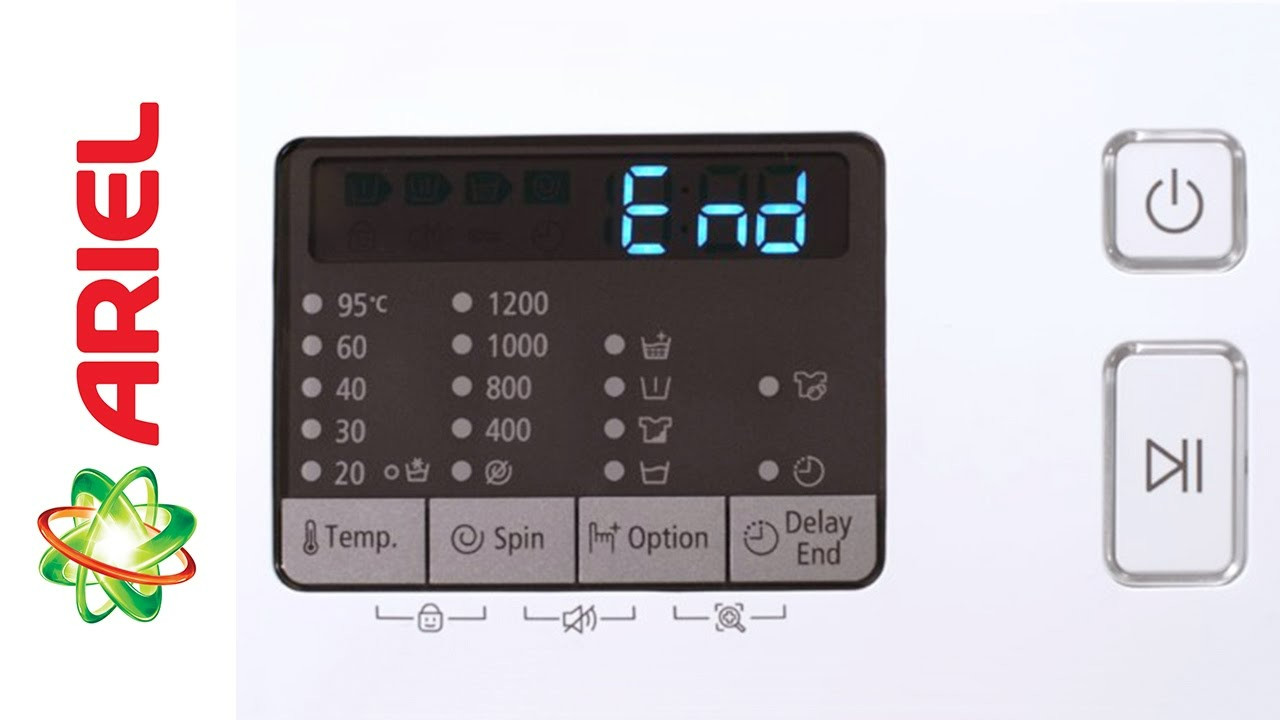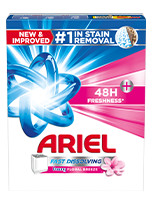
Products
On the battlefield of stain removal, it’s important to know the weapons at your disposal. Here you can familiarize yourself with the Ariel products you can use in your quest for cleaner clothes!
Detergents
Fabric softeners
Detergents
Not all detergents are the same! Detergents are made up of many specialist ingredients – but some, like Ariel have more of the best ingredients.
Identifying the right detergent
You need only to look at the line-up of your washing to pick the right one for the job:
White Loads: For white loads use a bleach-containing detergent such as Ariel Automatic Powder Original.
Coloured Loads: For colours, use a color friendly detergent without bleach such as Ariel Automatic Power Gel Original or Ariel Automatic 3in1 PODS Original
Which form of detergent should I use?
3in1 PODS: Easy and convenient to use. They don’t contain oxygen bleach and are great for washing coloured loads. Pods should be placed on the bottom of the drum with the wash load on top. Great for greasy stains - for example, oils, makeup etc.
Liquid: Liquids dissolve particularly quickly. They are great for directly pre-treating the stains, especially useful for those most difficult to remove. Great for greasy stains - for example, oils, makeup etc. For best results with liquids, use a dosage cap. Putting it on top of the load helps the ingredients to work right from the start.
Powders: Can be dosed flexibly. Ariel Automatic Powder Original should be dosed directly into the washing machine dispenser drawer.
Fabric softeners
Most people think Fabric Conditioners are just there to make clothes feel soft and smell nice... but they do far more than that!
Fabric Softeners can offer many other benefits...
Decrease static cling (especially helpful with permanent-press and synthetic fibers).
Reduce wrinkling.
Protect colours from fading in the next wash.
Reduce drying time.
Make ironing easier.
How fabric conditioner works...
Fabrics in a wash solution have a negative charge on the surface. Fabric Conditioners such as Lenor contain positively charged Surfactants (called cationic surfactants). During the final rinse stage, the fabric conditioner bonds to the fabric surface to provide a lubricating layer that feels soft to touch.
How the fabric conditioner dispenser works...
1. Add the fabric softener at the start of the washing process. Softener cannot escape from the compartment.
2. During the final rinse fill, the water flushed into the compartment triggers the siphon and the softener is drawn through the siphon. Some water also overflows from the back of the compartment.
3. The siphon continues until the compartment is dry at the end of the wash cycle and ready for the next wash.
Tips & tricks:
Never fill beyond the maximum level – it will only cause problems! Filling beyond the maximum level indicator in the dispenser compartment triggers the immediate release of the fabric conditioner, which means that it will interfere with how well the detergent works and you won’t get any of the conditioner benefits listed above!
Regularly clean/flush the dispenser compartment with warm water to avoid the siphon blocking! Sometimes your washing machine does not dispense the fabric conditioner simply because the siphon may be blocked. Check the siphon for any signs of build up.
Clearing a blocked syphon in a typical dispenser: There is usually a removable cover to help prevent the siphon from becoming blocked. Open the compartment by lifting out the cover to expose the syphon. Clean residues by running the compartment under a hot tap. Scrubbing with an old tooth brush may help.
Loading the machine
To prevent this from happening, leave a gap about the width of your hand between the top of the drum and the laundry.
A washing machine works by immersing the laundry in a solution of water and washing detergent and tumbling it. Modern, low water fill washing machines are designed to use less water, so owners of these should be particularly careful not to over fill. For the best possible results, there has to be enough water for the detergent to dissolve and enough space for your clothes to move around. If the gap between the top of the drum and the laundry is less than a hand’s width, your machine is probably too full. If this is the case, the laundry may soak up so much water that there isn’t enough left to dissolve the detergent!
You should be aware that more delicate fibres and faster wash cycles require a smaller load to give the garments more space to move around.
How much should I use?
The key facts to consider are...
How dirty the clothes are
Size of the load
Water hardness
It is important to dose correctly as under dosing can result in poor cleaning and stain removal.
Dirt levels: The more heavily soiled your clothes are, the more detergent you will need to use in a load. This helps to remove dirt and stops it returning onto your clothes.
Drum size: Detergent dosage is based on the drum size of a conventional washing machine. Most washing machines now sold have larger drums (6-8kgs). Larger wash loads bring in more dirt, so to get great results on every wash you need more detergent.
Water hardness: Water hardness varies throughout the region. To get the best results people in hard water areas need to use more detergent.
Related articles
Ariel Innovation
Discover the latest developments in the world of laundry with Ariel! From our latest Ariel Innovations to Ariel product announcements, find out how we're working to make your laundry experience better and more efficient - giving you outstanding stain removal each time.
New Ariel Powder
Getting stains on your clothes and seeing your favourite white garment lose its lustre are inevitable parts of our lives. That doesn’t mean you should put up with them.
How to remove nail polish stains from clothes
Nail polish is a cosmetic lacquer that comes in a variety of colours, but it’s more than just a dye stain.



